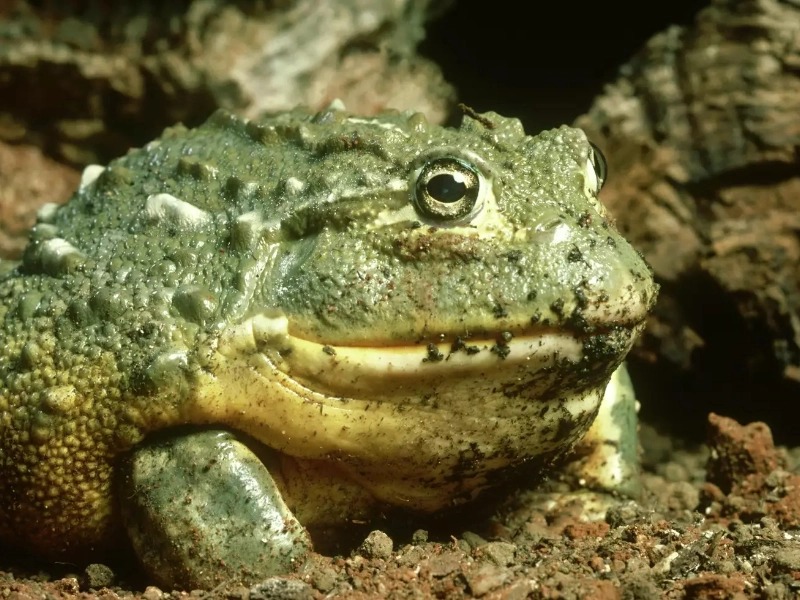
17 Animals Amazingly Adapted to Thrive in Deserts
By • Last Updated1. African Bullfrog

Scientifically known as Pyxicephalus adspersus, the African bullfrog is a remarkable amphibian with exceptional adaptations that allow it to thrive in various often challenging environments across Africa. Measuring up to 9 inches long, it is considered the second-largest frog species on Earth. Beyond its impressive size, the African bullfrog has developed unique strategies for survival in harsh habitats, including deserts and areas with elevations reaching 4,000 feet.
One of the most notable adaptations of the African bullfrog is its ability to enter a state of dormancy called aestivation, which helps it endure prolonged droughts. During hot, dry periods, the bullfrog burrows into the ground, allowing it to escape extreme temperatures and conserve moisture. Once underground, it enters a hibernation-like state, remaining dormant for sometimes over a year. Fascinatingly, the bullfrog undergoes a transformation during this process: its skin sheds and hardens, forming a protective cocoon that helps retain moisture and allows it to absorb water stored in its bladder.
This remarkable amphibian can lose up to 38% of its body weight while in this dormant state, demonstrating its incredible adaptability and resilience. When the rains finally arrive, the bullfrog emerges from its burrow, ready to resume its active life, marking a crucial period for foraging and breeding. As an opportunistic feeder, the African bullfrog consumes a wide variety of prey, including insects, small birds, rodents, and even other frogs, depending on what fits in its mouth. This dietary flexibility is vital for its survival, especially in environments where food availability fluctuates.
Breeding typically occurs shortly after the rains, making it essential for the species’ survival. Males are known for their loud, distinctive calls, which attract females and establish territory. After mating, females lay their eggs in temporary ponds formed by rainwater, ensuring that the next generation has access to the necessary aquatic environment for development. The lifespan of the African bullfrog is closely tied to water availability, highlighting the delicate balance between its survival strategies and the surrounding ecosystem.
In summary, the African bullfrog serves as a fascinating example of animal adaptation. Its varied feeding and reproductive strategies, combined with its ability to withstand extreme conditions through aestivation, underscore the resilience of this species. As climate change continues to impact ecosystems worldwide, understanding and appreciating the unique adaptations of creatures like the African bullfrog will be essential for their survival.